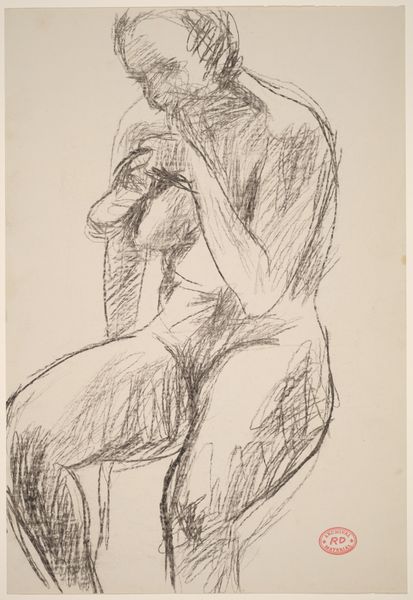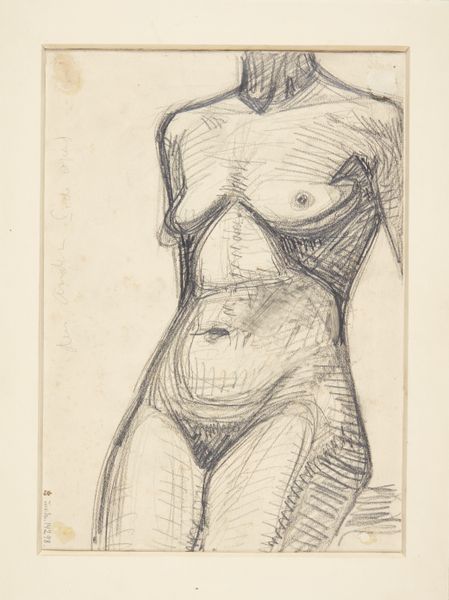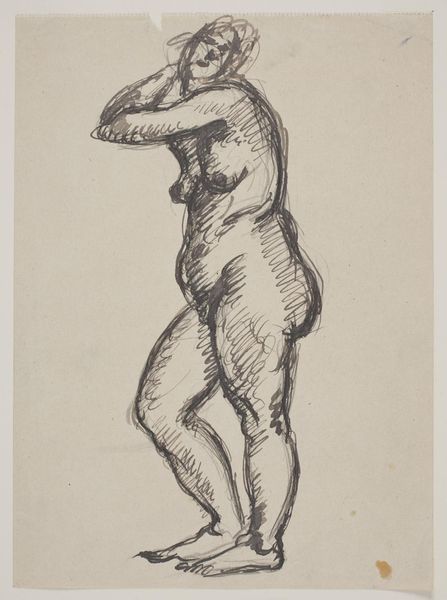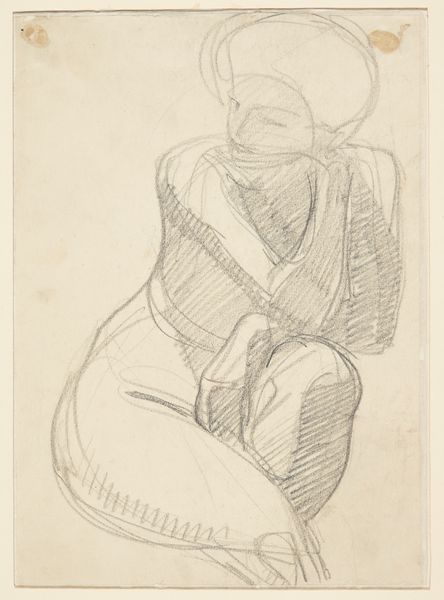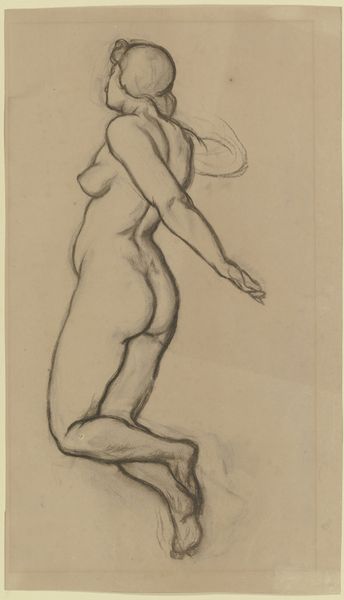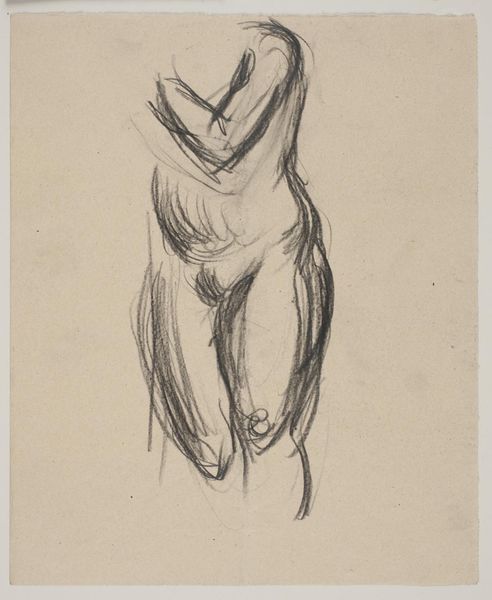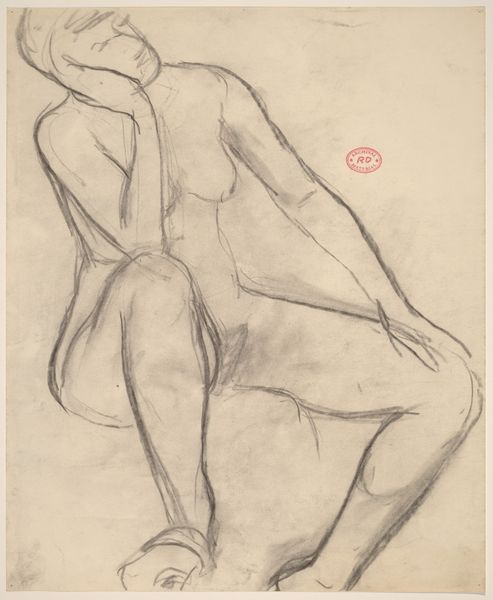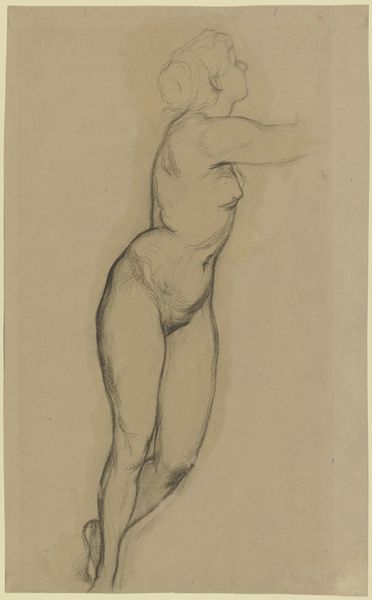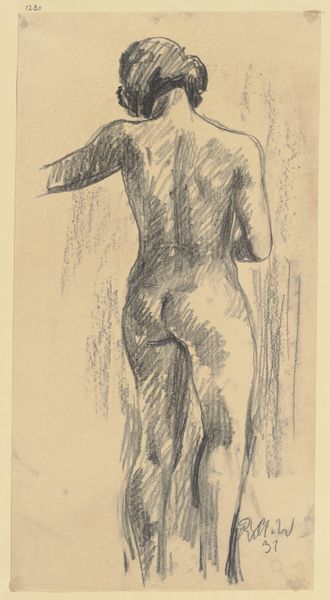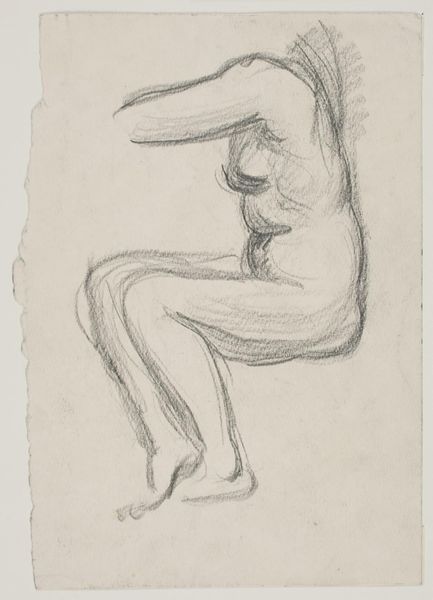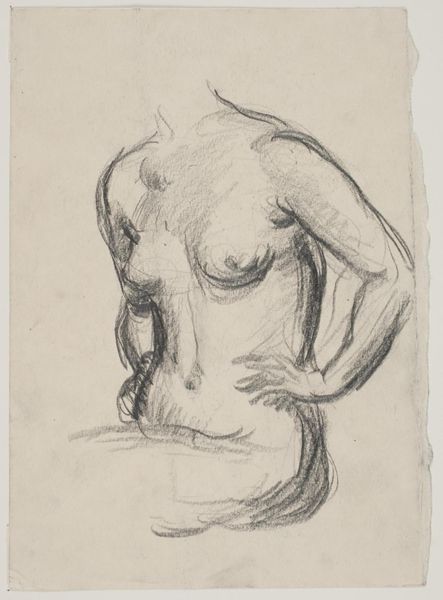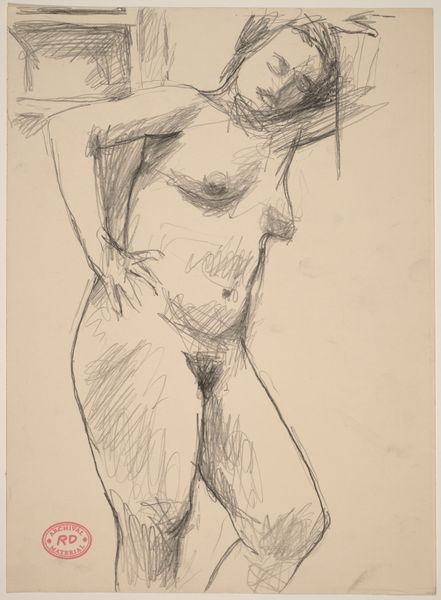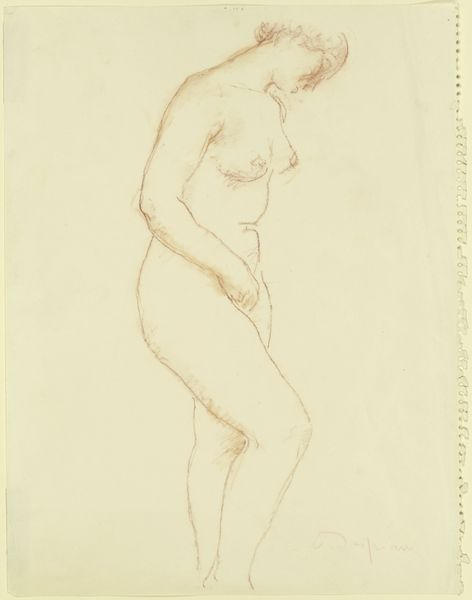
drawing, pencil
#
drawing
#
dutch-golden-age
#
pencil sketch
#
figuration
#
pencil drawing
#
pencil
#
expressionism
#
nude
Dimensions: height 315 mm, width 249 mm
Copyright: Rijks Museum: Open Domain
Editor: This is "Vrouwelijk naakt," a pencil drawing by Leo Gestel, from around 1929 to 1930. There's a kind of melancholy to it, something unresolved in the unfinished lines and the pose. How do you interpret this work, especially given Gestel’s involvement with Expressionism? Curator: It's interesting you pick up on that melancholy. To me, the fragmented quality, the raw energy of the pencil strokes, suggests more than just a portrait. The female nude has been a potent symbol throughout art history, often representing ideas about beauty, nature, or vulnerability. Given Gestel's expressionist tendencies, he might be subverting traditional representations of the female form, revealing a psychological landscape rather than just physical likeness. Do you sense a tension between the traditional subject and a more modern approach? Editor: Yes, definitely. It feels like a very personal expression, not idealized at all. The lines are so gestural and emotive, quite different from the academic nudes I've studied. There is also the contrast between the curves of the body and the angular lines suggesting shadow and definition, how might the relationship of the line weight impact how we see it? Curator: That angularity disrupts any comfortable sense of classical beauty. It adds to the emotional charge. Think of the visual language that took hold post-WWI. Artists, responding to collective trauma, found new ways to depict the body – not as an ideal, but as something marked by experience. Here, Gestel seems to channel a raw honesty about the human condition. The shifting line weights amplify areas, adding layers to the psychological story the image embodies. Is this dissonance perhaps a sign of a changing world, reflected in how the body is depicted? Editor: That's fascinating. It’s definitely changed how I see the piece – less about the nude itself, more about the feelings it evokes as a symbol. Thanks for pointing that out! Curator: And thank you for your insights! Considering Gestel’s symbolism adds a whole other layer to appreciating art history.
Comments
No comments
Be the first to comment and join the conversation on the ultimate creative platform.
